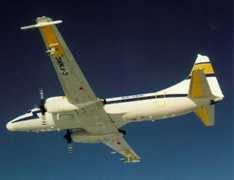Back to ExploreNAWX Radar
Instrument
NAWX Radar
National Research Council (NRC) of Canada Airborne W and X-band Radar
The National Research Council of Canada (NRC) Airborne W- and X-band Radar (NAWX) is an airborne polarimetric Doppler radar developed by NRC and ProSensing Inc. It provides measurements of clouds and precipitation. NAWX operates at 9.41 GHz and 94.05 GHz. NAWX has a resolution of 150 m for the X-band radar and 60 m for the W-band radar.

Instrument Details
- Radar
- Earth Science > Spectral/engineering > Radar > Spectrum WidthEarth Science > Spectral/engineering > Radar > Doppler VelocityEarth Science > Spectral/engineering > Radar > Radar ReflectivityEarth Science > Spectral/engineering > Radar > Radar Imagery
- Full Column Profile
- Variable
- 150 m (X-band), 60 m (W-band)
- 9.41 GHz, 94.05 GHz
- https://cscenter.co.jp/icrm2019/program/data/abstracts/Poster1-53.pdf
Mengistu Wolde, Andrew Pazmany
Mengistu Wolde, Andrew Pazmany
NRC Aerospace, ProSensing Inc.
National Research Council, Canadian Space Agency
Currently unavailable
 Convair-580 8 Campaigns · 45 Instruments |  GPM Cold Season Precipitation Experiment 2012 Ontario, Canada and northern portions of the United States (e.g., New York state, the New England area, etc.) 1 Deployment · 44 Data Products
C3VP Canadian CloudSat/CALIPSO Validation Project 2006—2007 Ontario, Canada 1 Deployment · 6 Data Products
|